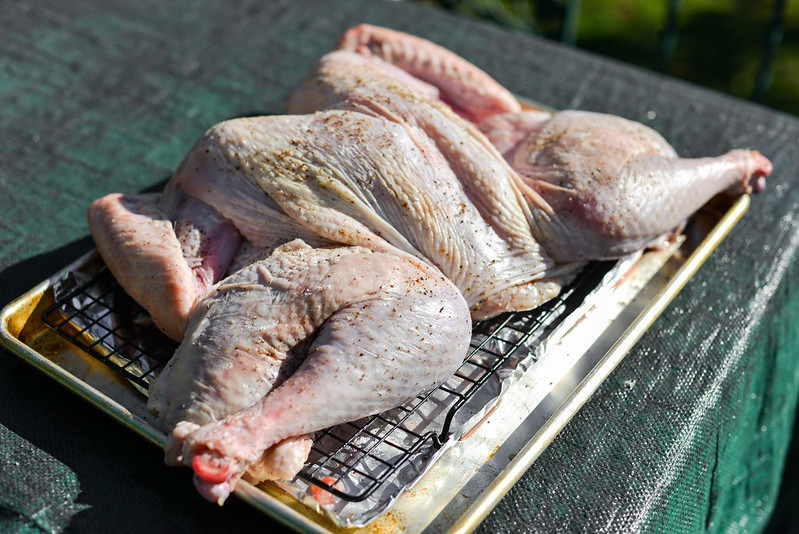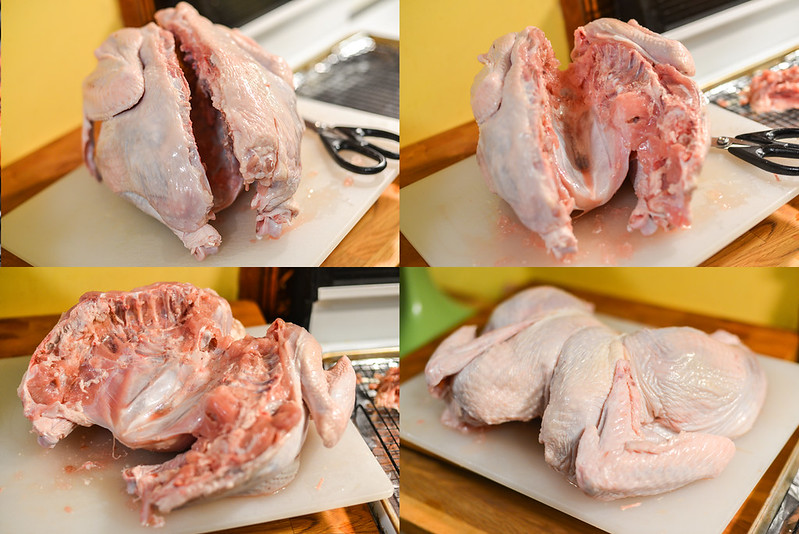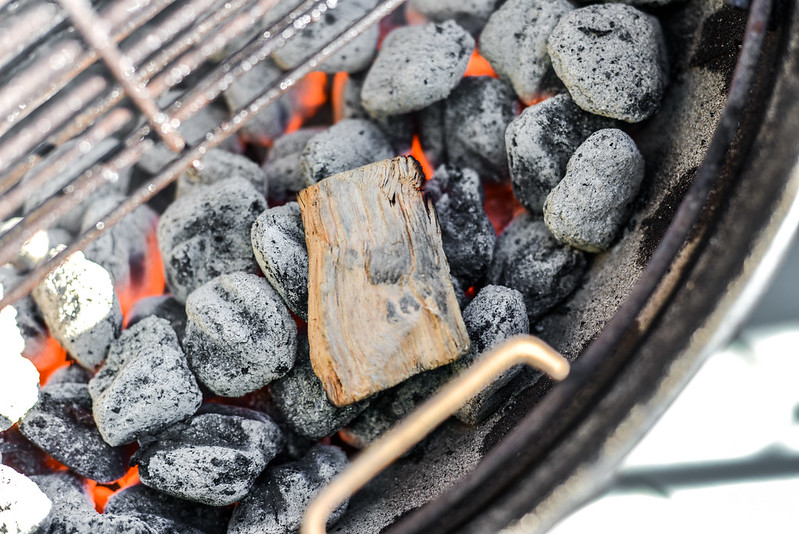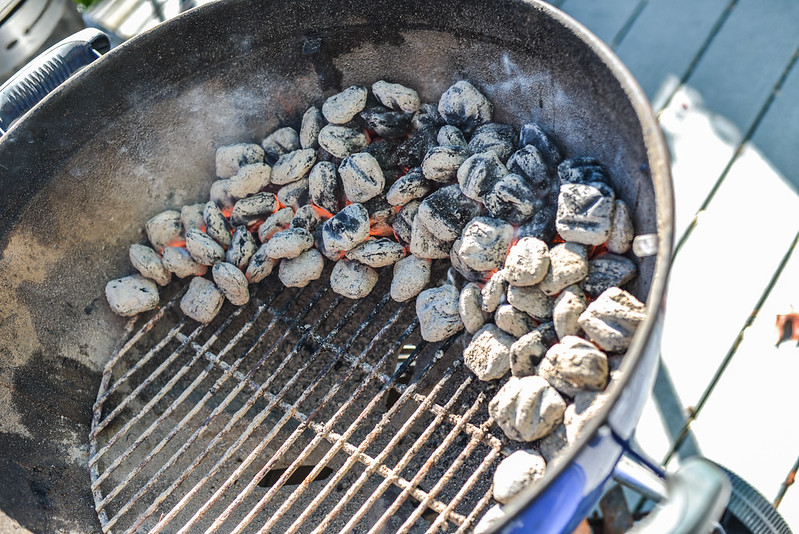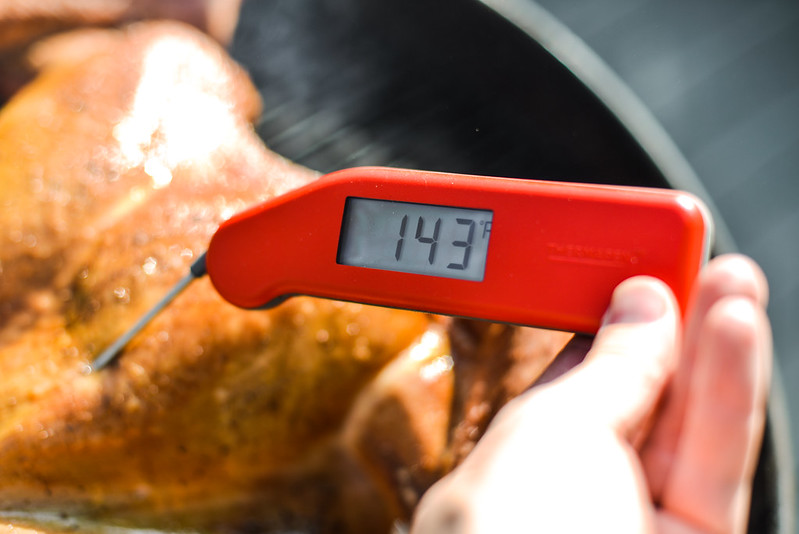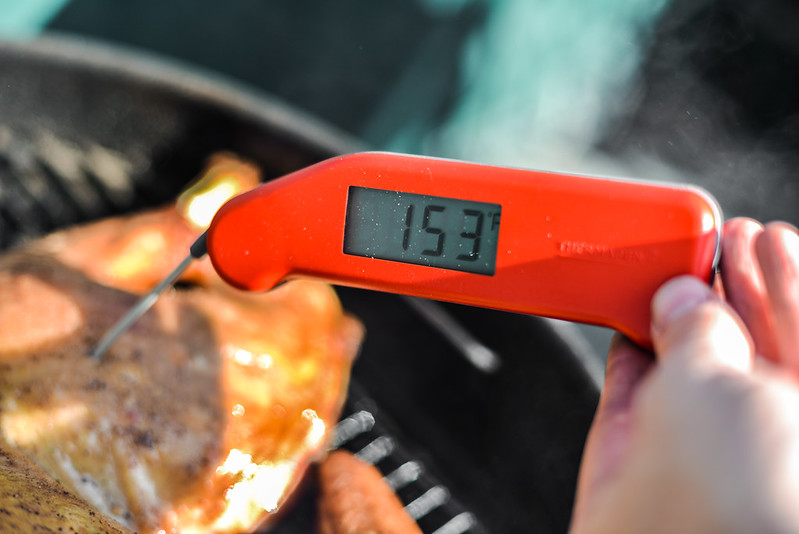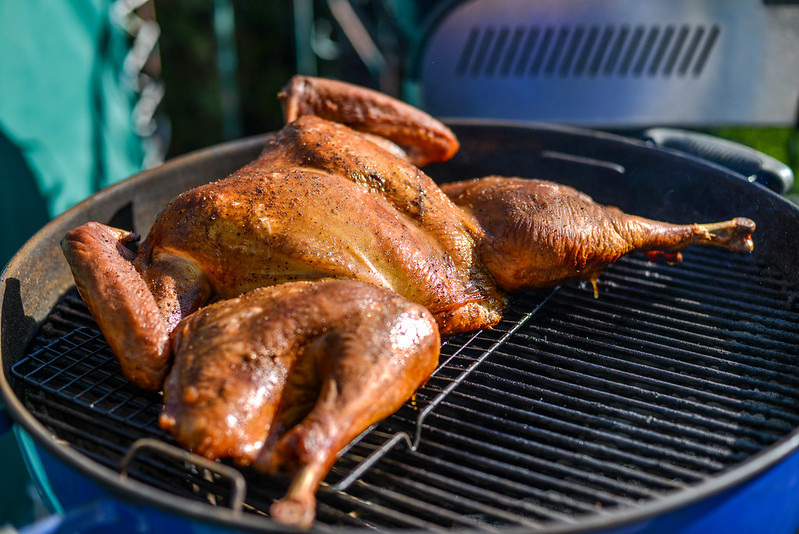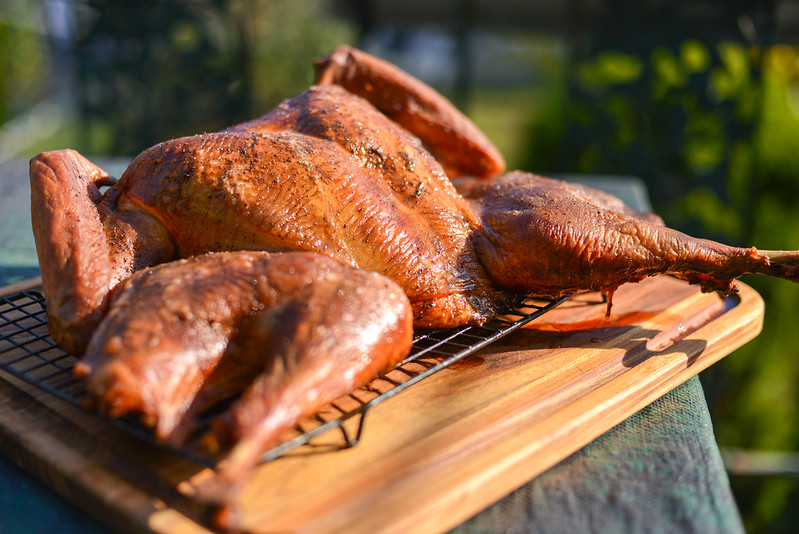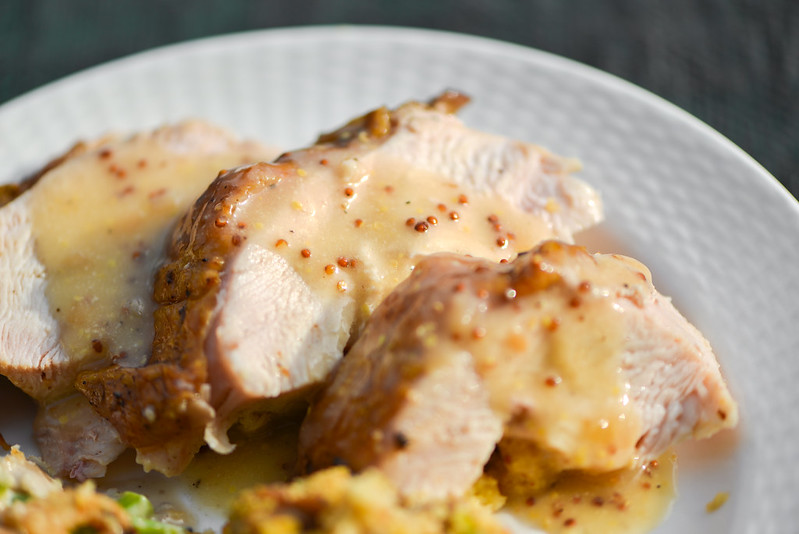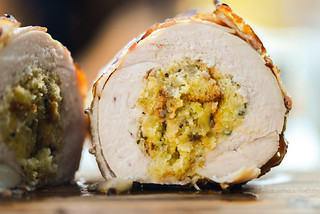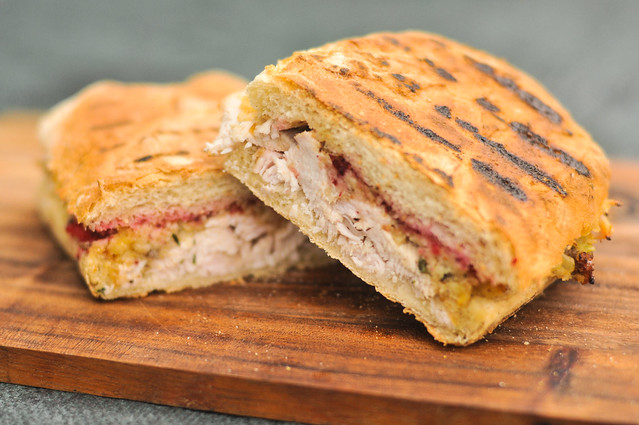Grilled Spatchcocked Turkey
At this point I feel like I've done turkey every which way over the flames. I've slow smoked birds, flavor-brined them, rubbed them in an herb butter, done them up beer-can style, cajun-style, stuffed turkey breasts with cranberries, wrapped them in bacon, turned them into burgers, and more. It seemed like I was reaching a turkey saturation point...I'd managed to exhaust almost all backyard grilling options except one: spatchcocking.
Why spatchcock you may ask? The long and short of it is that by removing the backbone of the turkey, pushing the breasts flat, and splaying out the legs and thighs, you can create a more ideal roasting shape for the bird. The more uniform height created by butterflying makes for more even and faster cooking in return.
To get this bird started, I went about the process of butterflying my 14-pound natural turkey and then rested it on a wire rack set in a baking sheet. I seasoned the turkey liberally with salt and pepper and let it dry brine in the fridge overnight—I like taking out this insurance policy, knowing that I'll get moist results even if I accidentally slightly overcook my bird.
The extra bonus of spatchcocking the turkey was getting the backbone to use to make a rich turkey stock, which I later combined with a roux to make an outstanding gravy.
What I was most interested in taking this butterflied bird to the flames was exploring the distinct advantages the grill affords, and those kept popping up one after another.
Advantage 1: Space. If you've ever cooked the Thanksgiving meal, you're all too familiar with the delicate dance of oven space to get everything done at just the right time. The biggest hog is usually the turkey, taking up nearly the entire oven for longer than anything else. Moving the turkey outside to a grill gives so much more leeway to what can be done indoors, at particular temperatures, and when.
Advantage 2: Smoke. Let's face it, turkey isn't all that exciting of a meat, but what's Thanksgiving without it? On the grill, the addition of smoke gives the meat a boost in flavor that, in my book, makes it more unique and delicious. With turkey, and most poultry, you want to use a minimal amount light woods—one or two small chunks of apple or cherry will do—to keep the bird from becoming overly smoky, which can render the meat acrid.
Advantage 3: Heat Delivery. Using either a charcoal or gas grill, you can control how heat is delivered to the bird in a more strategic fashion than you can in the oven. On a charcoal grill, this is done by arranging your coals to build the right intensity of heat and placing the bird in the appropriate location; on the gas grill this is done by selecting which burners are turned on and which are left off. This turned out to be a pretty big deal for my spatchcocked turkey.
So how do you do it? Let's take a quick look.
When it came time to grill my beautiful beast, I lit up a full chimney of charcoal. After the coals were covered with gray ash, I spread them out in a crescent moon shape along one side of the charcoal grate. While I let my covered grill warm up, I considered putting a foil tray with stock and vegetables on the cool side of the grill to collect the turkey drippings, but then decided against it. In the past, these dripping collected ash and gained a smoke flavor a little too harsh to be usable for gravy. I could have jury-rigged a solution that let drippings into the pan while keeping most ash out, but I had already made a really delicious gravy by using the backbone and neck and just dropped the idea to focus more on getting a perfectly cooked bird this time around.
Once sufficiently warmed, I added in one chunk of apple wood to the fire; everything was a go for turkey liftoff. As I sat with the giant bird, considering the perilous transfer to the grill, I decided to make life easy on myself and just put the entire wire rack on the grill, which worked great, allowing me to move the bird around without danger of it falling apart or tearing the skin.
I situated the turkey so its legs and thighs were closest to the fire, with the majority of the breast meat as far away from the heat as possible. With the crescent moon arrangement of coals, this meant the legs and thighs were all well surrounded by fire without being directly on top of it.
I monitored my turkey pretty constantly after the first 45 minutes to ensure my suspicions would play out. My goal was to keep the breast meat cooking at a slower rate than the legs and thighs, and I found that throughout the cook, this proved true. About an hour in, the breasts were registering a solid 10°F below the thigh meat. At this point, I added half a chimney of new coals to keep the bird roasting at a medium-high temperature—around 425°F, give or take 25°F.
Another thirty minutes in and that new batch of coals helped the legs and thighs cook even faster. They were now just above 165°F, while the breast meat was at my ideal 150°F. In just 1 1/2 hours, I had this turkey done to perfection, temperature-wise at least.
I let it rest for 20 minutes at room temperature and began carving. After separating the legs and thighs, I cut the breasts away from the bone and sliced them up, exposing glistening meat that even had my white-meat dissing self eagerly awaiting the chance to eat it. I sliced up the thighs next, which had gotten a nice rosy hue around the edges of the meat from the smoke they'd picked up.
Every piece of meat from this bird was moist and flavorful. The breasts had a delicate kiss of smoke and were juicy enough that they didn't need any enhancement, although gravy never ceases to be a requirement for me. The dark meat was smokier, which worked with the relatively more intensely flavored meat (and made for the most delicious parts of bird in my opinion). I've cooked a lot of turkeys over the years, and this was the first that required absolutely no Band-Aids like bacon, injections, herbs, rubs, etc. to cover up deficiencies.
This is a bird that's absolutely perfect in its simplicity.
You Might Also Like
Comments
-
Dave r This is my preferred way to cook them as well. You can dry brine them longer similar to Zuni Cafe Chicken and let them air dry:
3. Season the turkey with 1.5 tbsp Salt 1 tbsp Weber kick in chicken 1 tbsp Montreal steak or chicken all mixed together
4. Let the bird sit in the fridge, dry brining, for 2 nights. You can do this in a jumbo ziploc bag.
5. The day before cooking, remove the bird from the zip loc back and put it in a plastic bucket with the wings propped up like its sitting in the bucket to air dry. Could be done on a rack too. -
Jason Josh, are you going to share your gravy recipe too :)
-
Josh @Jason Here's the white wine and mustard gravy recipe I made with this turkey. And here's my recipe for a basic turkey gravy (which is what I usually make on Thanksgiving).
-
Rob Looks great just curious if your Weber is a standard size 22 or a 26? I don't think I can fit a 14 pounder on my 22 in grill? Thanks
-
Connie This looks really good, but I only have a gas grill. Can it be cooked that way as well? Thanks!

